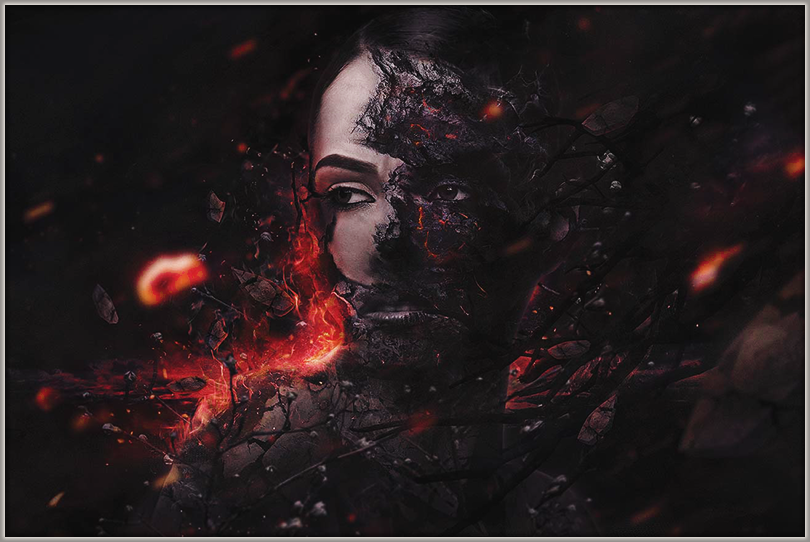Difference between revisions of "Sundering"
(→Origin) |
|||
| Line 29: | Line 29: | ||
Now, Sundering is the common name for the practice. Scholars are usually divided politically on the art, as some regard it as a World Magic, and others, a blasphemous misuse of the Mark of Control. It is both lucrative and dangerous to study, both as a Fragmenter and a Sunderer for various reasons. | Now, Sundering is the common name for the practice. Scholars are usually divided politically on the art, as some regard it as a World Magic, and others, a blasphemous misuse of the Mark of Control. It is both lucrative and dangerous to study, both as a Fragmenter and a Sunderer for various reasons. | ||
| + | |||
| + | ==Tools== | ||
| + | |||
| + | xx | ||
==Processes== | ==Processes== | ||
Revision as of 11:53, 31 December 2021
Contents
Introduction
In comparison to most other magics, Sundering is very new to the world. It has existed for thousands of years in more primitive practices, but not nearly as expansive as it is in the current year.
Sundering is the general term for tampering with Fragments, though it has carried many different names in the past. The practice is often viewed as controversial, even on an individual basis, for its ability to harness Arcanacrags, but also the creation of Sunderscraps. While some countries condone the execution of mages that the darker side of Sundering necessitates, others aggressively rebuke all aspects of the craft for that reason alone and seek retribution against all its practitioners. Regardless of the stance a country might take on Sundering, it cannot be denied that the benefits the Sunderer provides are revolutionary.
A lot like Necromancy, Sundering has held back the world on the exploration of traditional sciences, as the convenience of Fragments has historically fulfilled the need to innovate new technologies.
Origin
Fragmenting was the original name of the art as it dealt solely in the application of Arcanacrags, which was the only Fragment available for the majority of history. It is well known that Fragmenting was made by no intention of the Gods, and instead came to be when the first Hyr'Norai discovered the crystalized remains of Noradac and all the wild and bizarre properties they had. They were plentiful at the beginning of mortal existence but became rare and obscure as the Mortals became more populace. The stones that provided so much in the form of benefits were very finite, and only so many had been discovered. As Such, Fragmenting gradually tapered from a common life skill that nearly every mortal knew and practiced, to a specialized art that very few understood or even knew about.
Then, everything changed after The Bleeding of Venedak. It was discovered that Noradac, the Spirits, became Arcanacrags when they were slain. A series of great hunts were launched over a period of only fifty years, and Arcanacrags were placed in the hands of ambitious scholars and scientists. With a much higher floor of education than early society, scholars across the world discovered alternative uses for the Arcanacrags. The Fragments that were once considered to be indestructible, could be manipulated and altered to bend and shape other Arcanacrags to the will of the crafter.
These Scholars, or Fragmenters as they were named at the time created specialized tools that could bend and shape Arcanacrags as they saw fit. Anvils and hammers capable of doing so became common in the castles of kings and the palaces of emperors. When Arch Hollows were discovered, and the supply of Arcanacrags only grew as rulers and usurpers sought to claim control of them where they appeared, Fragmenters only innovated more and more with the crystallized essences, and eventually discovered means of refining and purifying the corrupted fragments collected from the Hollows.
As new technologies and applications of Arcanacrags began to explode in popularity, Sunderscraps slipped quietly into existence. The crystallized ether of a mage was discovered in Daravin, and though the existence of such a thing was tried for secrecy, the workings of the Candor found the truth, and word spread like widlfire. Fragmenters all over the world learned of its existence and began to hypothesize how something could come to be, and what its applications might entail. And with their reserves of knowledge and research, they found the answers they sought.
A new branch of Fragmenting was founded. Sundering, as it was called, was built with a focus on mage hunting, and the gathering of Sunderscraps by extension. Lorien's Fragmenters saw the most growth in this practice, and because they didn't care for the well-being of mages that were executed in the acquisition of the Sunderscraps, no innovations toward the longevity or sparing of the donor mage were looked for, but only greater tools purposed for the murder and cannibalization of a mage's ether.
The weapons and armor created through Sundering changed the tides of war and decimated opponents that relied on steel and bullet alone. Quickly, it was established that Lorien's innovations in the efficiency of extraction and destruction of mages were a superior means of obtaining Sunderscraps, and the wild arms race that was the Sundering Revolution hit its head.
Now, Sundering is the common name for the practice. Scholars are usually divided politically on the art, as some regard it as a World Magic, and others, a blasphemous misuse of the Mark of Control. It is both lucrative and dangerous to study, both as a Fragmenter and a Sunderer for various reasons.
Tools
xx
Processes
xx
Sunders
xx
Impact
xx
Novice
xx
Apprentice
xx
Journeyman
xx
Expert
xx
Master
xx
